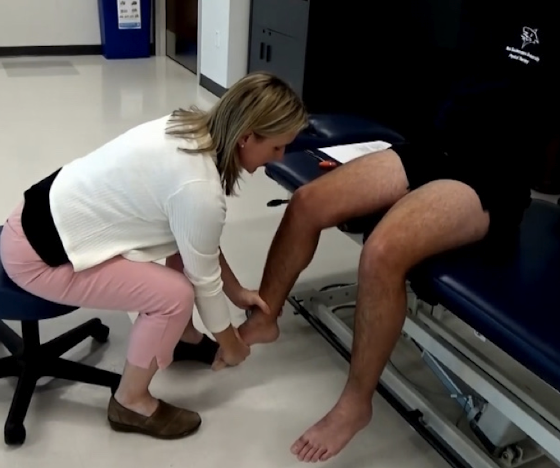Week 12: Neurological Testing
1/91
There's no tags or description
Looks like no tags are added yet.
Name | Mastery | Learn | Test | Matching | Spaced |
|---|
No study sessions yet.
92 Terms
Test point for C2 dermatome
Mastoid process
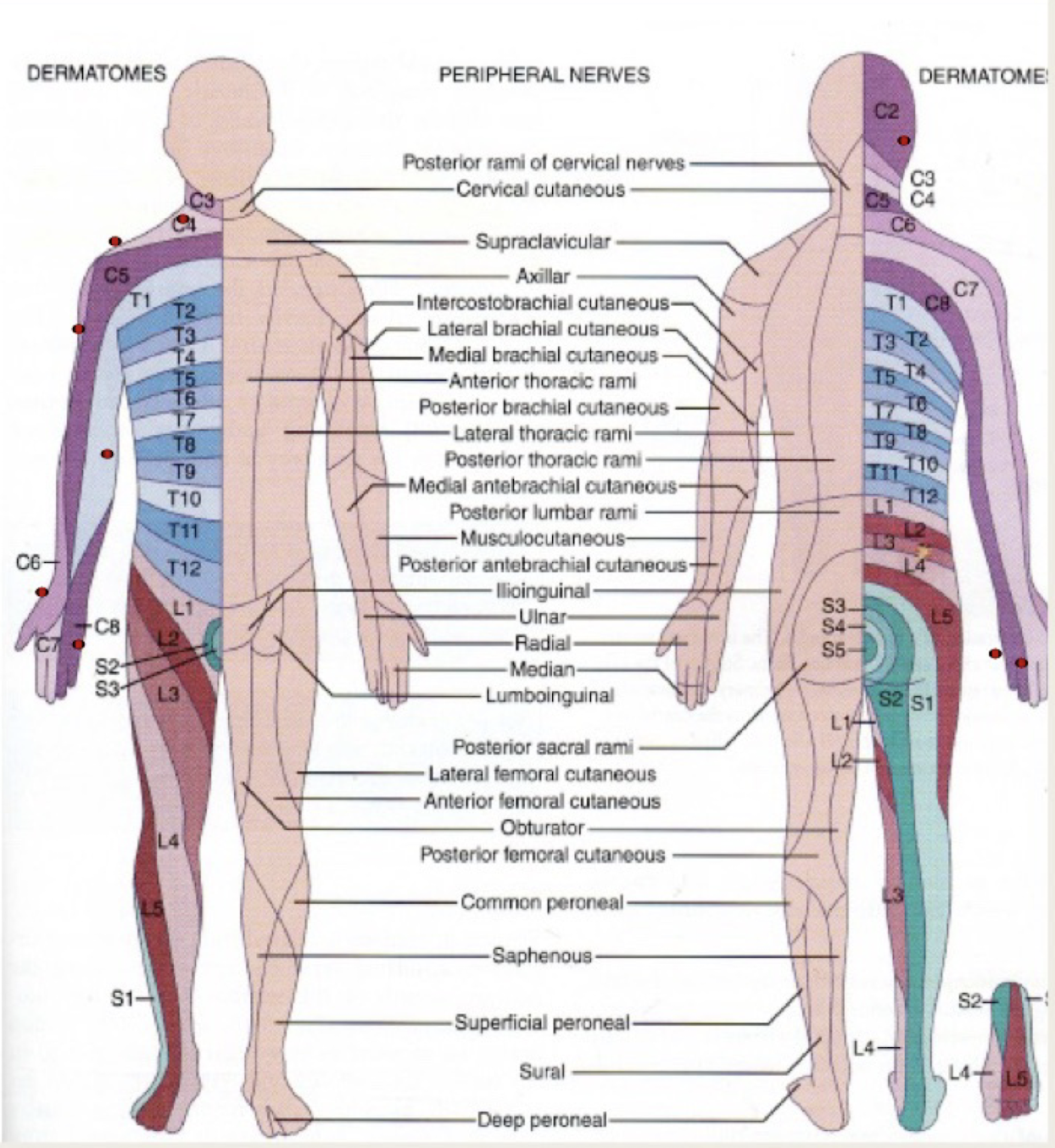
Test point for C3 dermatome
Supraclavicular Fossa
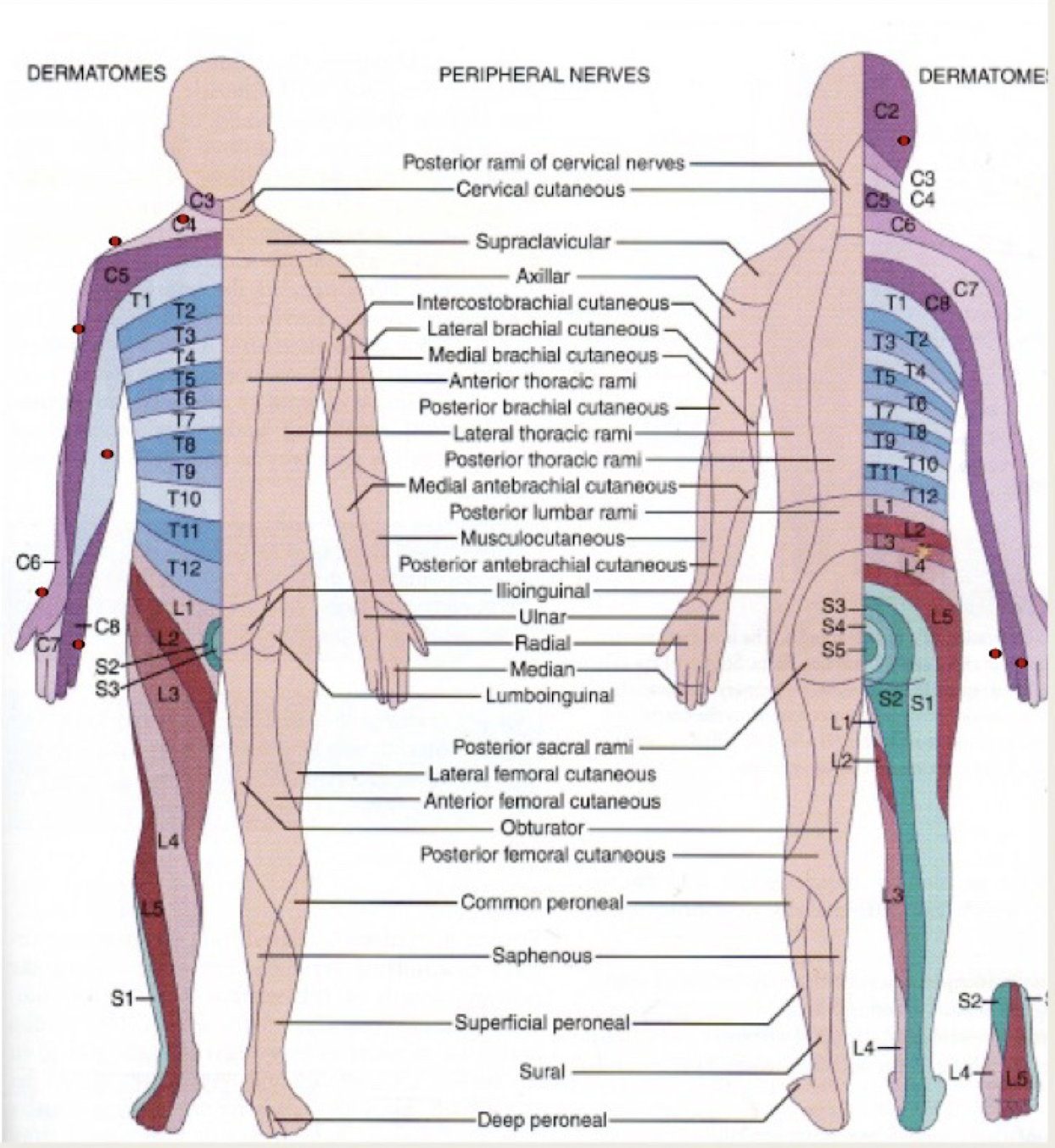
Test point for C4 dermatome
AC joint/Upper Trap

Test point for C5 dermatome
Lateral deltoid/Anterolateral arm

Test point for C6 dermatome
Lateral base of thumb
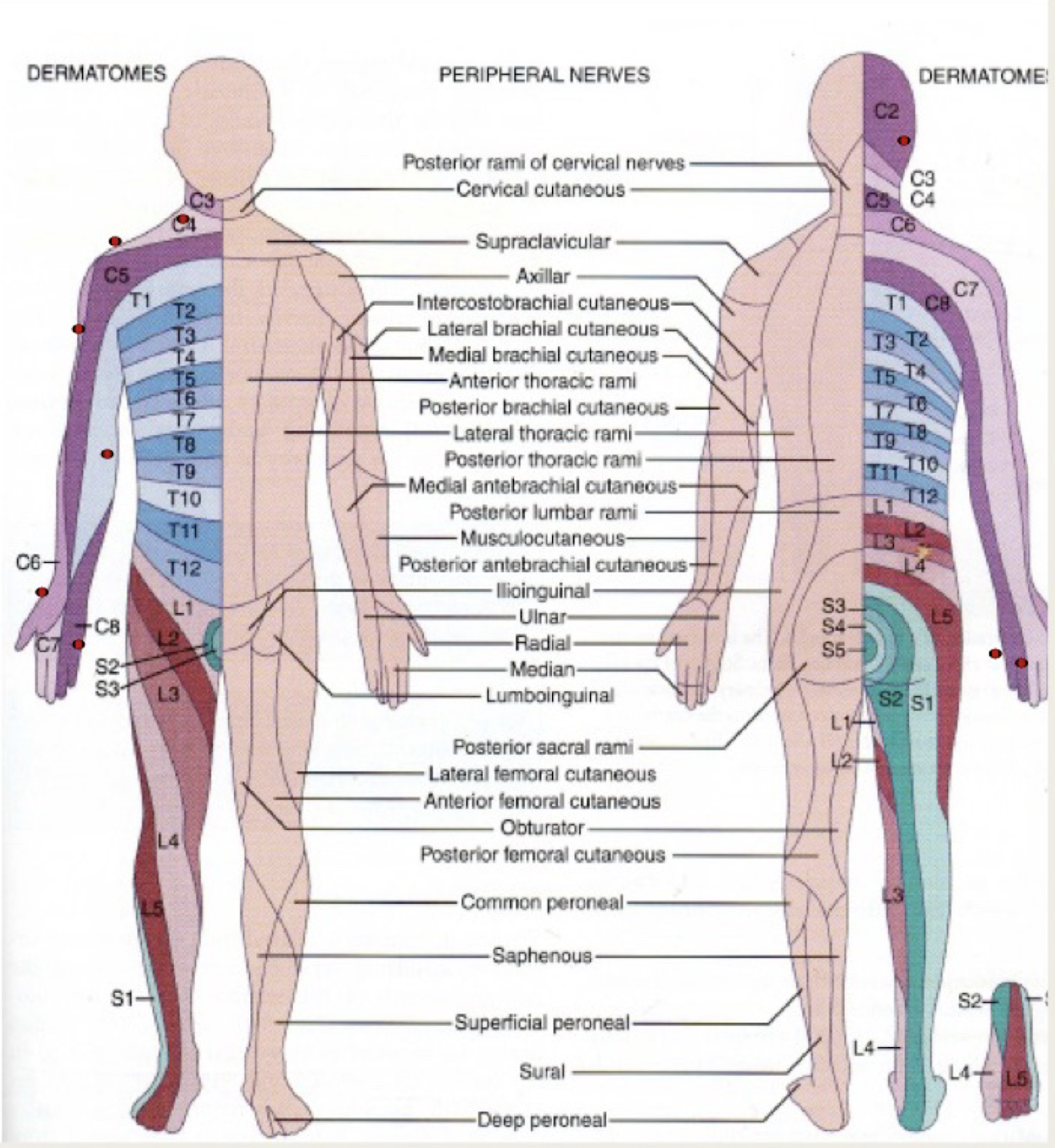
Test point for C7 dermatome
Posterior 3rd digit
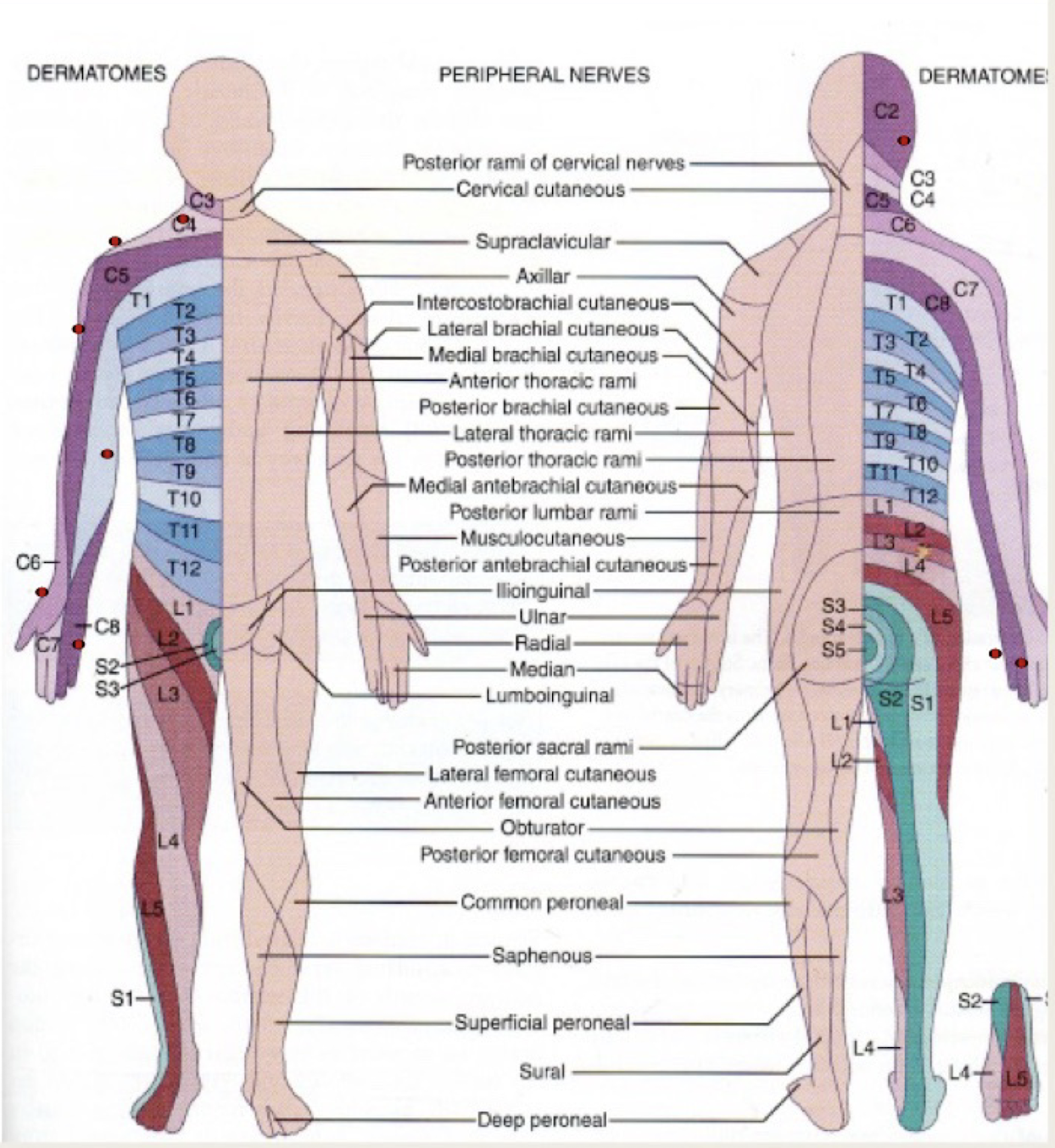
Test point for C8 dermatome
Lateral 5th digit
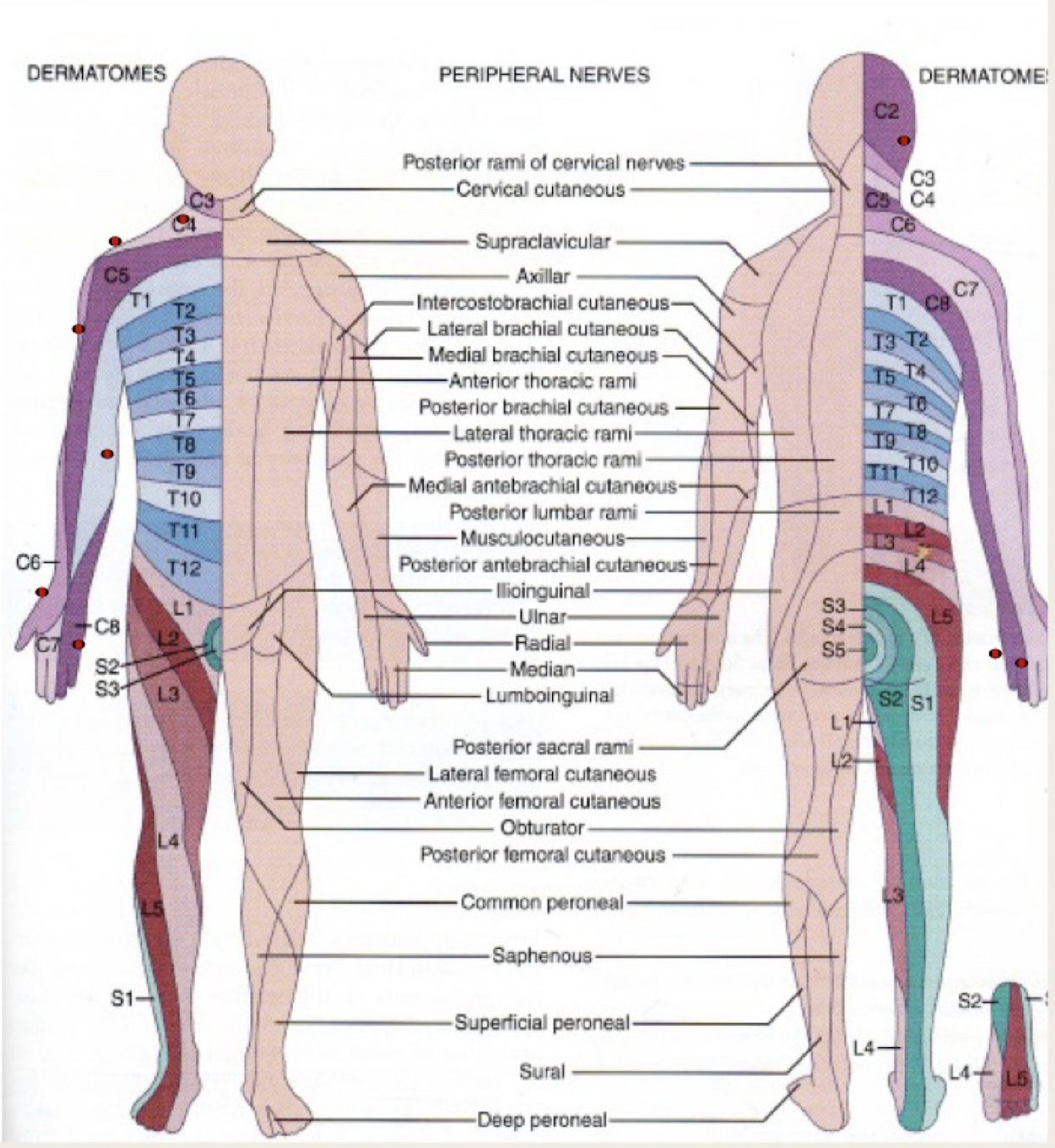
Test point for L1 dermatome
Inguinal line
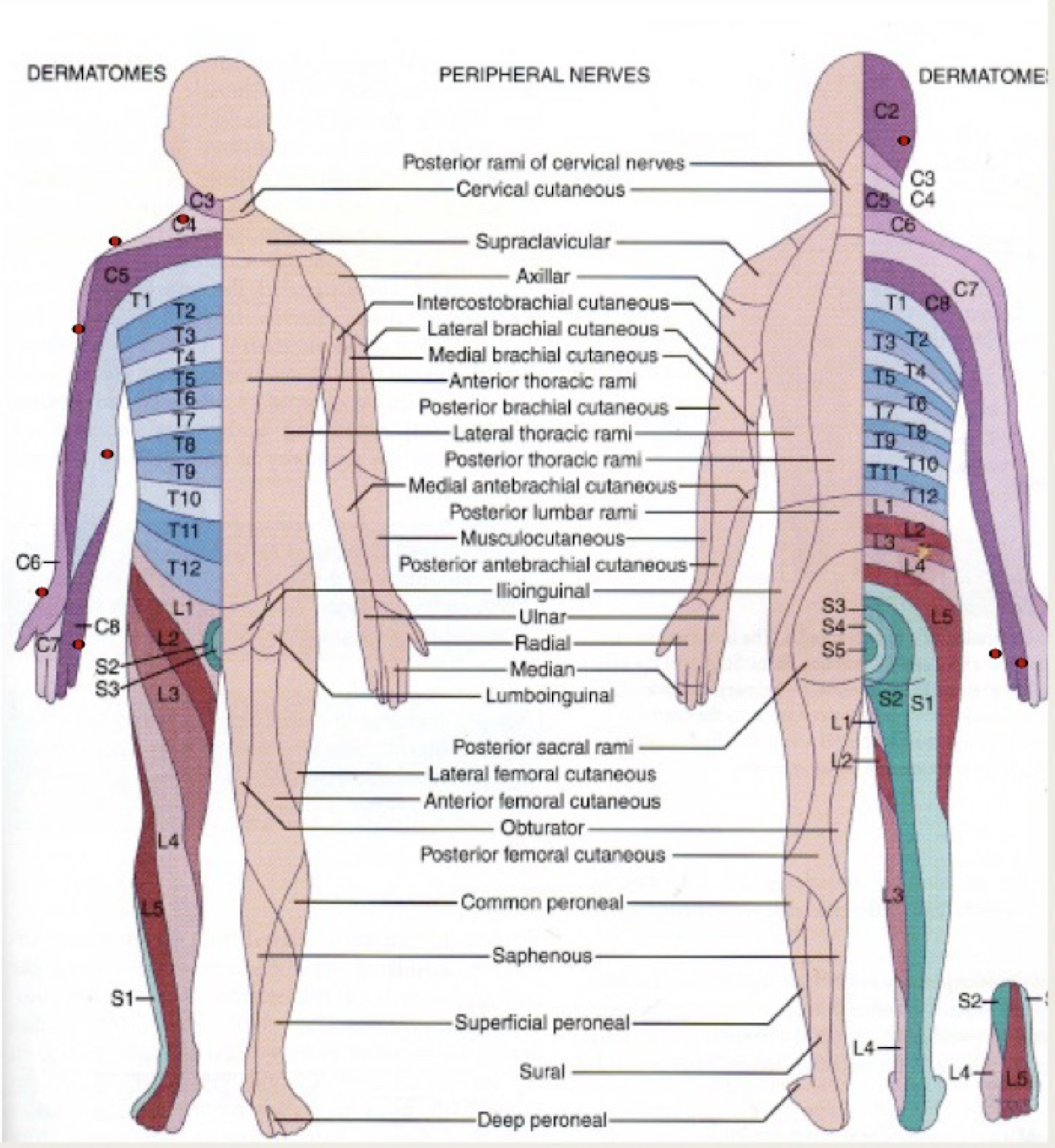
Test point for L2 dermatome
Upper thigh below inguinal line
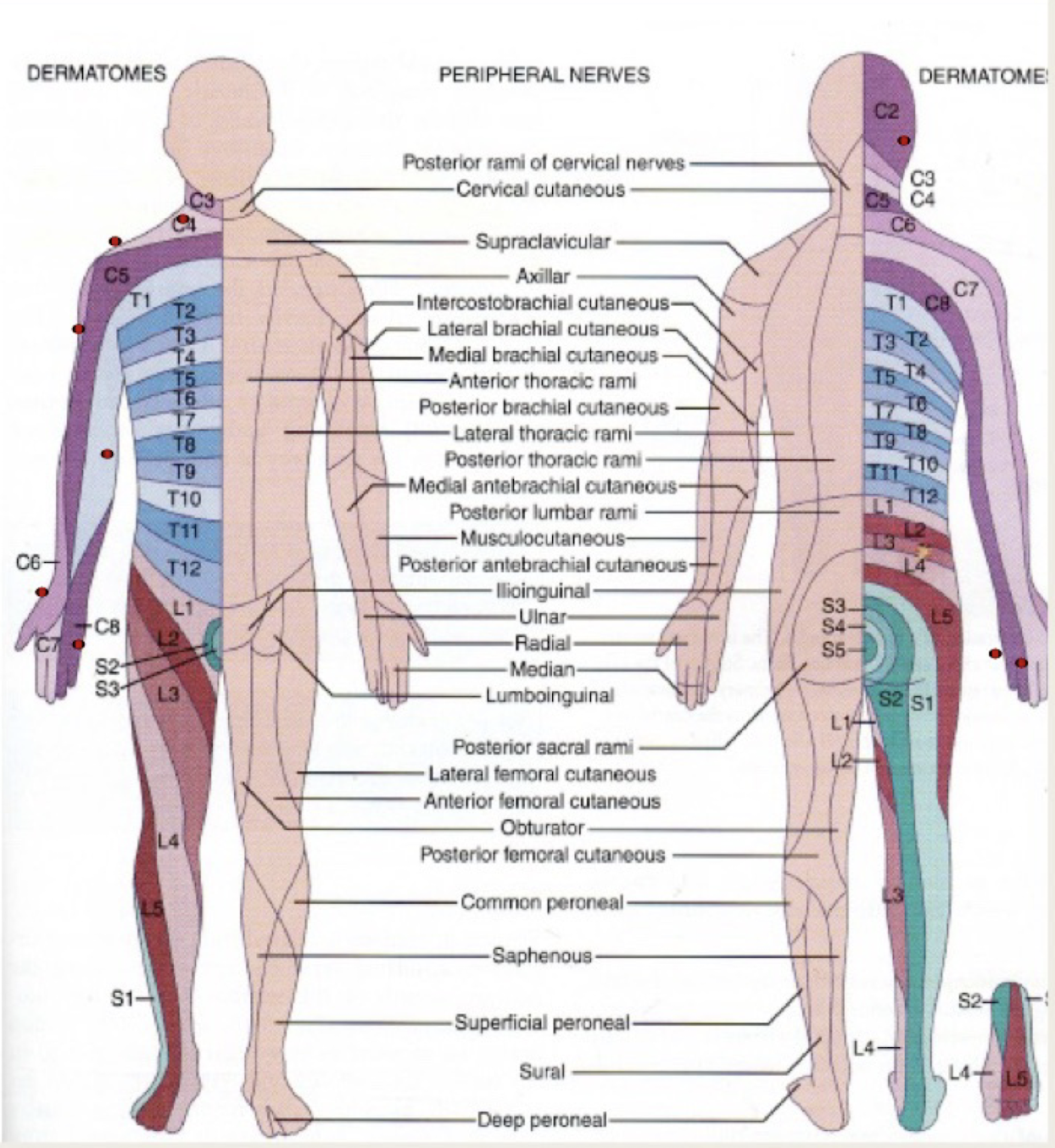
Test point for L3 dermatome
Distal thigh above knee
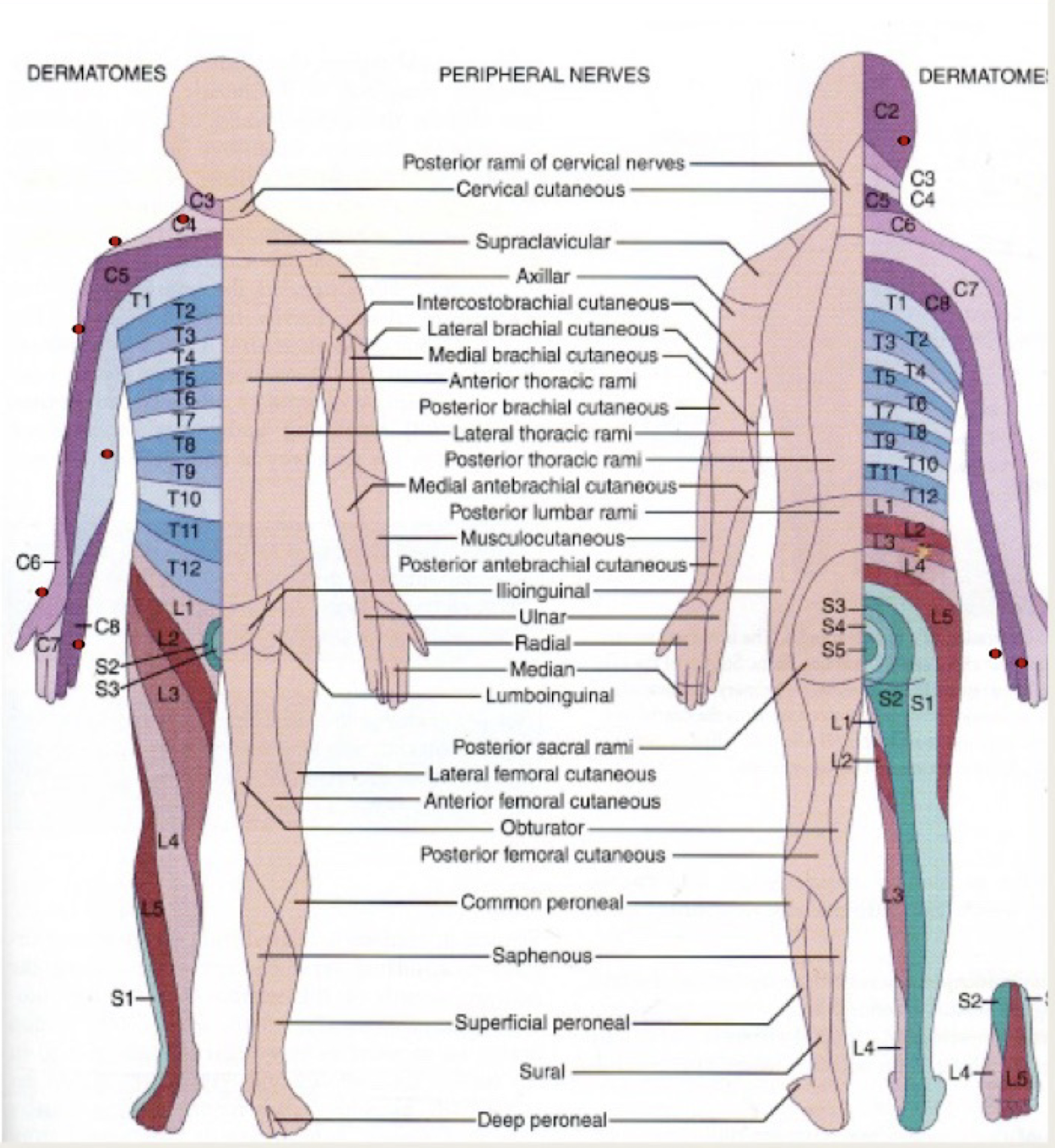
Test point for L4 dermatome
Medial malleolus
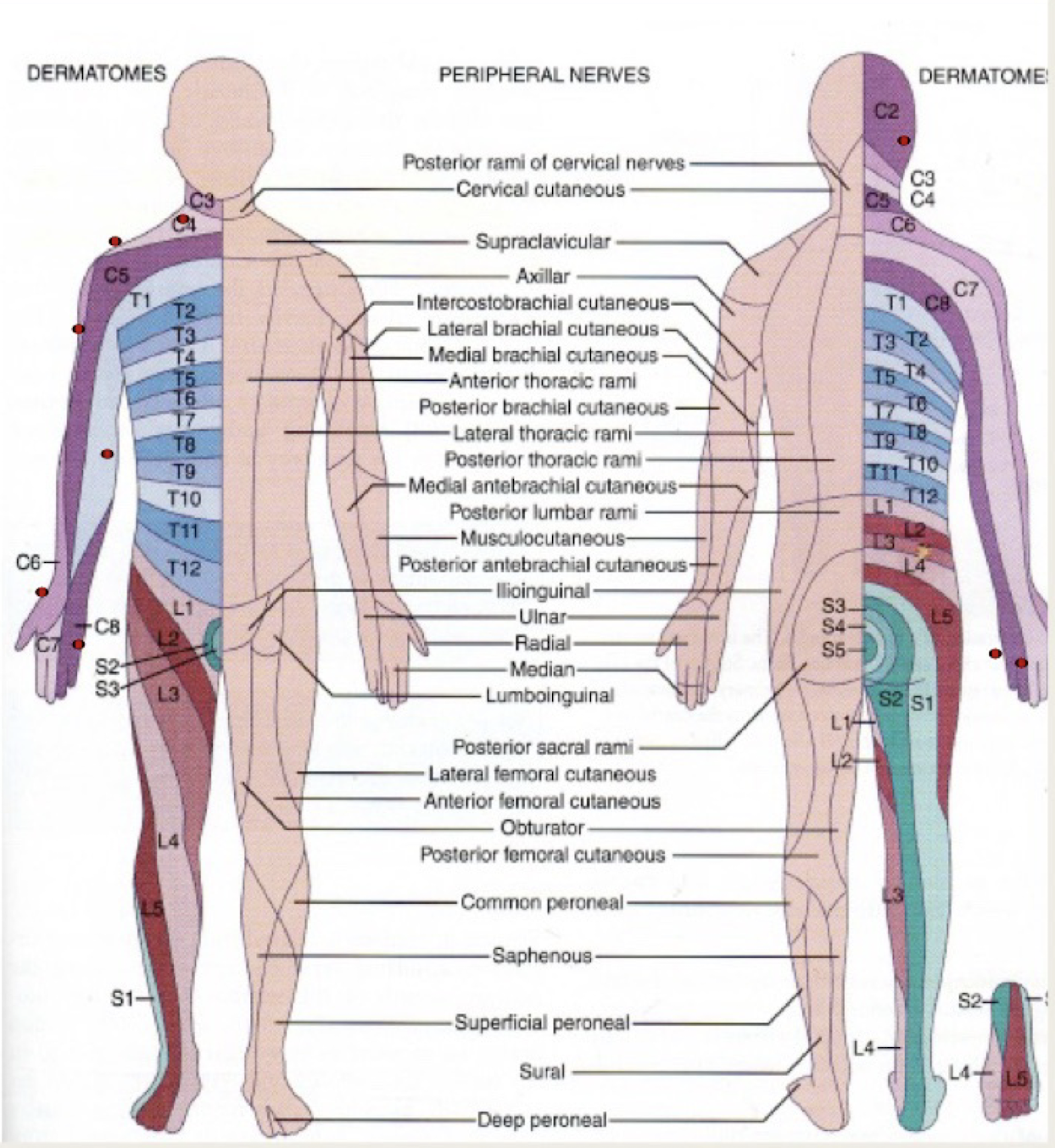
Test point for L5 dermatome
Dorsum of foot
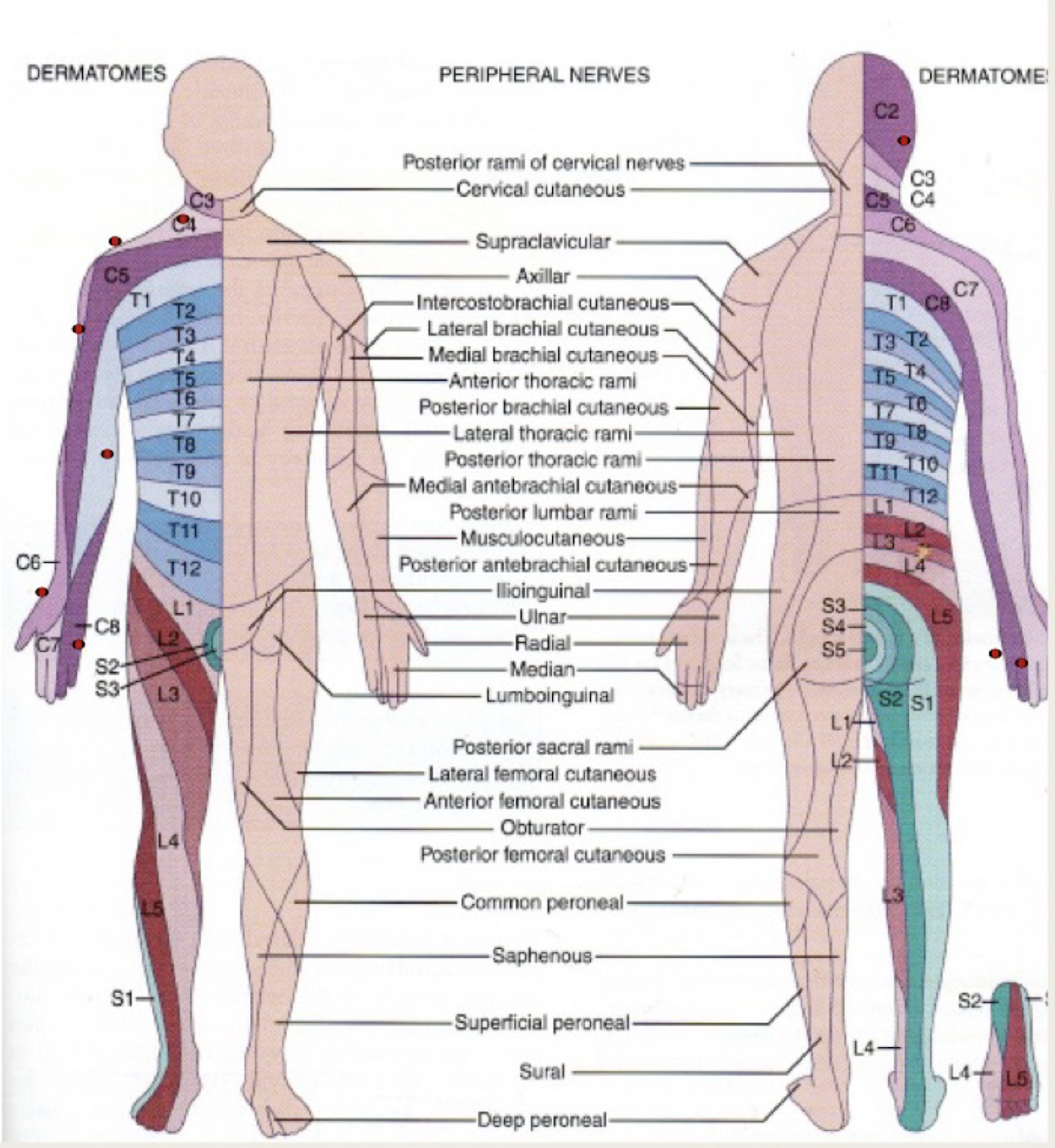
Test point for S1 dermatome
Lateral border of foot

Test point for S2 dermatome
Achilles tendon

Test point for S2-5 dermatome
Saddle area
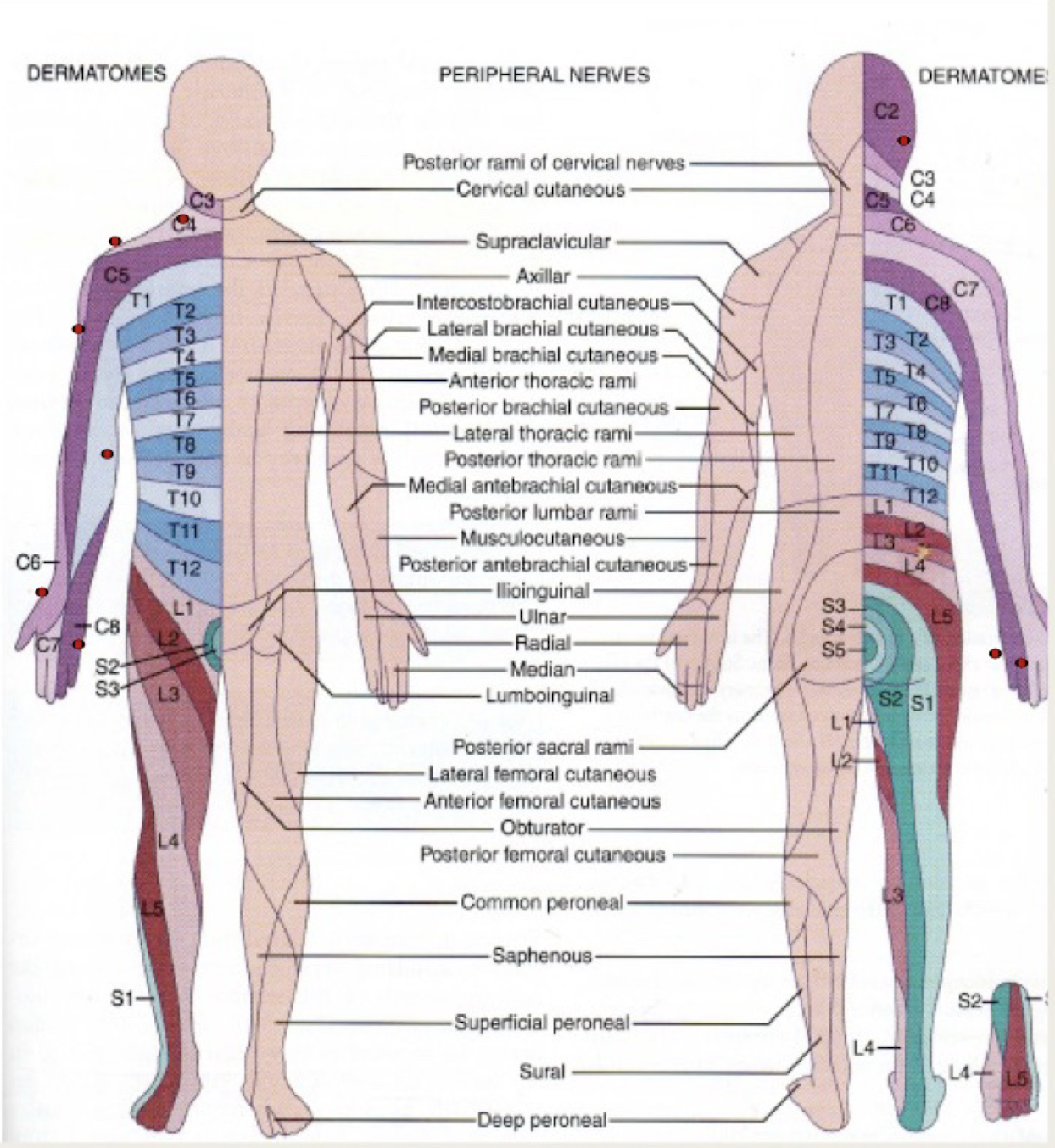
Which sensory receptors are responsible for superficial sensations
Exteroceptors
Exteroceptors receive stimuli from
the external environment via the skin and subcutaneous tissue
Exteroceptors are responsible for perceptions of sensations of
Pain
Temperature
Light touch
Pressure
Which sensory receptors are responsible for deep sensations
Proprioceptors
Proprioceptors receive stimuli from
muscles
ligaments
joints
fascia
Proprioceptors are responsible for
position sense
awareness of joints at rest
movement awareness (kinesthesia)
vibration
What are combined cortical sensations
the combination of both the superficial and depp sensory mechanisms
Combined Cortical Sensations require information from
both exteroceptors and proprioceptive receptors as well as intact function of cortical sensory association areas
Combined Cortical sensations include
Stereognosis
Two point discrimination
Baragonosis
Graphesthesia
Stocking Glove Distribution
Peripheral Neuropathy
Cannot feel sensation in the hands and feet but are able to feel the arms and legs
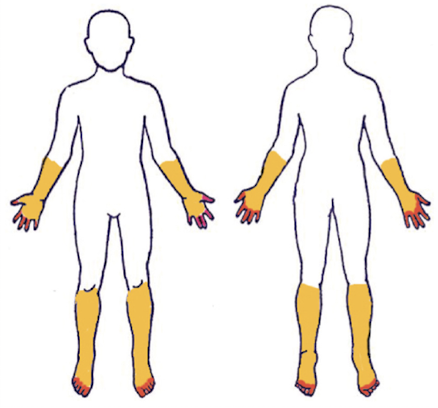
Stocking Glove Distribution may be from what disease
Diabetes
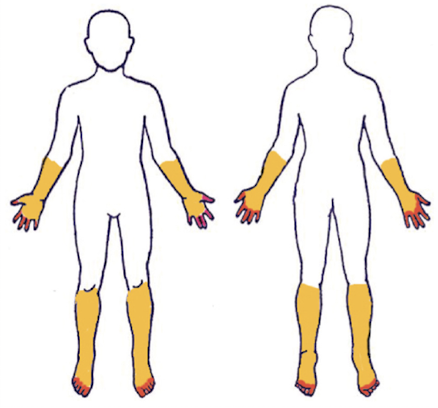
Testing pain perception is also referred to as
sharp/dull discrimination
Testing pain perception indicates
function of protective sensation
Testing proprioceptive awareness examines
joint position sense AND awareness of joints at rest
When testing proprioception of a extremity/joint
it is moved through a ROM and HELD in a static position
When testing proprioceptive awareness, the pt will respond with
“up” or “down”
Where should your fingers be placed when testing proprioception and kinesthesia
along the sides of the joint
When testing proprioception, the pt is asked to describe the position verbally
AFTER the change in movement has stopped
Testing for kinesthesia awareness examines
joint position sense AND the awareness of joints at rest
When testing kinesthesia of a extremity/joint
it is moved passively through a relatively small ROM
When testing kinesthesia the pt responds with
“Up”
“Down”
“In”
“Out”
When testing kinesthesia the pt verbally describes the direction when
DURING the motion - typically as soon as they feel which direction their extremity/join tis moving
Reflex
an involuntary, predictable, and specific response to a stimulus, which is dependent on an intact reflex arc
DTR
Deep Tendon Reflex
A DTR results from
stimulation of the stretch-sensitive IA afferents
DTR grading scale
0
1+
2+
3+
4+
DTR grade 0
Absent, no response
DTR grade 1+
Slight reflex, but depressed, low normal
DTR grade 2+
Normal, typical reflex
DTR grade 3+
Brisk reflex, possibly but not necessarily abnormal
DTR grade 4+
Very brisk reflex, abnormal, clonus
DTRs are increased in
Upper Motor Neuron (UMN) syndromes (e.g. stroke)
DTRs are decreased in
Lower Motor Neuron (LMN) syndromes (e.g. peripheral neuropathy, nerve root compression)
B/c each DTR arises from specific spinal segments
an absent reflex can be used to identify the level of a spinal lesion (e.g. radiculopathy)
WHy is it important to test reflexes bilaterally
so you can determine if the response is “normal” for the pt

Biceps Deep Tendon Reflex
C5 - 6
Biceps Deep Tendon Reflex response
Slight contraction of elbow flexors
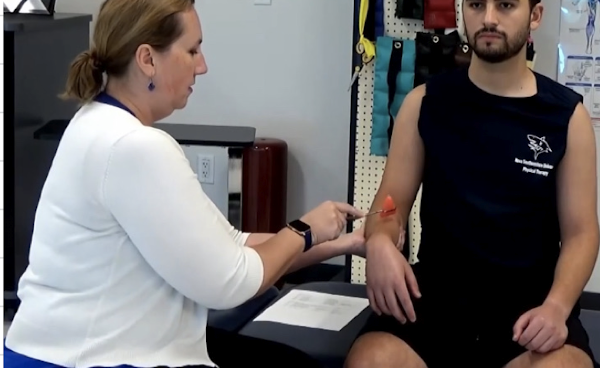
Brachioradialis Deep Tendon Reflex
C6 - 7
Brachioradialis Deep Tendon Reflex response
Slight contraction of elbow flexors, slight wrist entension or radial deviation
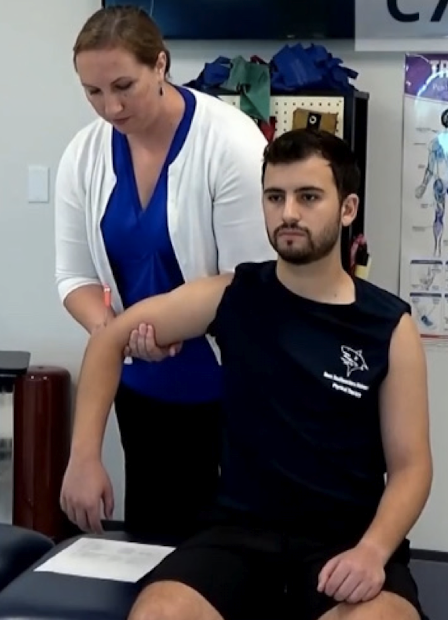
Triceps Deep Tendon Reflex
C7
Triceps Deep Tendon Reflex response
Slight contraction of elbow extensors
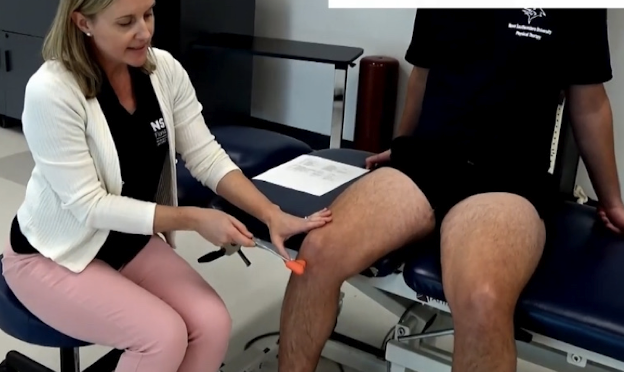
Patellar Deep Tendon Reflex
L3 - 4
Patellar Deep Tendon Reflex
Slight contraction of knee extensors
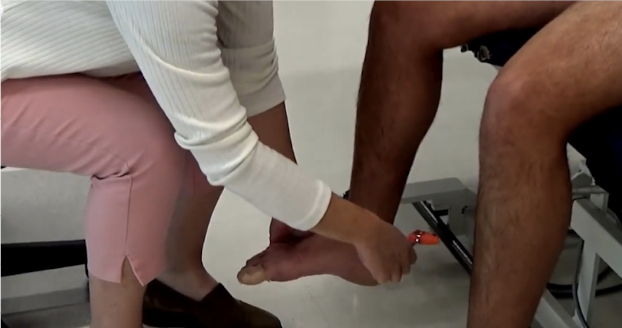
Achilles Deep Tendon Reflex
S1 - 2
Achilles Deep Tendon Reflex response
Slight contraction of plantar flexors
DTRs you hit directly on tendon
Triceps
Patellar
Achilles
DTRs you hit on your thumb
Biceps
Brachioradialis
Capital Flexion myotome
C1
Capital Extension myotome
C2
Cervical lateral flexion myotome
C3
Shoulder elevation myotome
C4
Shoulder abduction myotome
C5
Elbow flexion myotome
C6
Elbow extension myotome
C7
Thumb extension myotome
C8
Finger abduction myotome
T1
Hip flexion myotome
L2
Knee extension myotome
L3
Ankle dorsiflexion myotome
L4
Great toe extension myotome
L5
Ankle eversion myotome
S1
Ankle plantarflexion myotome
S2
Motion to test C1 myotome
Capital flexion
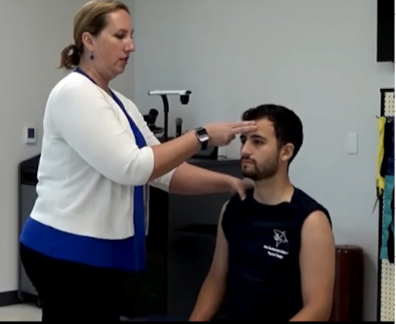
Motion to test C2 myotome
Capital Extension

Motion to test C3 myotome
Cervical lateral flexion
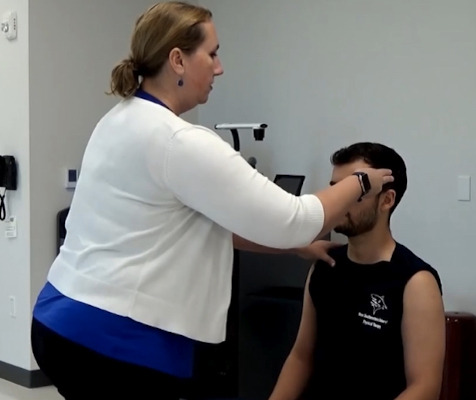
Motion to test C4 myotome
Shoulder elevation

Motion to test C5 myotome
Shoulder abduction
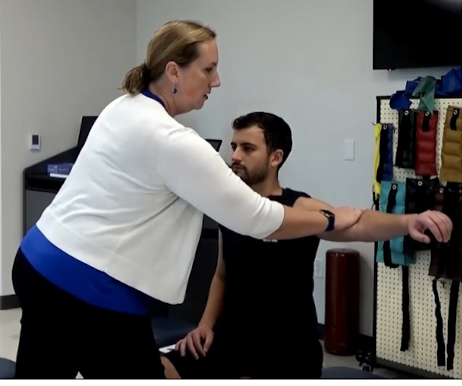
Motion to test C6 myotome
Elbow flexion
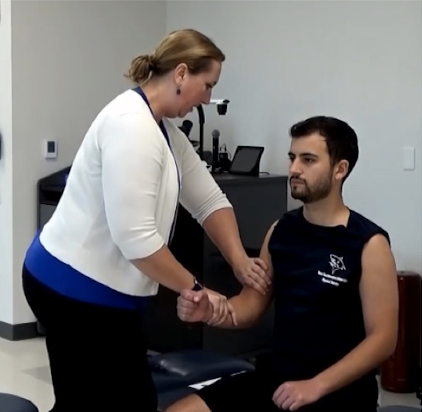
Motion to test C7 myotome
Elbow extension
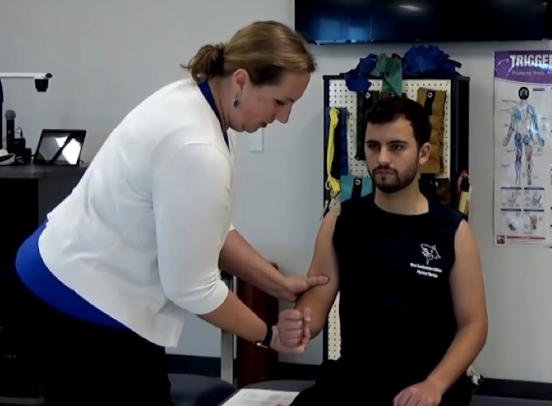
Motion to test C8 myotome
Thumb Extension
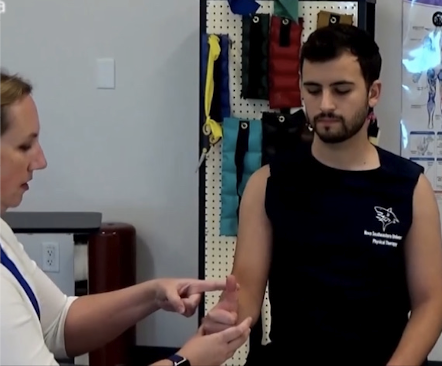
Motion to test T1 myotome
Finger abduction
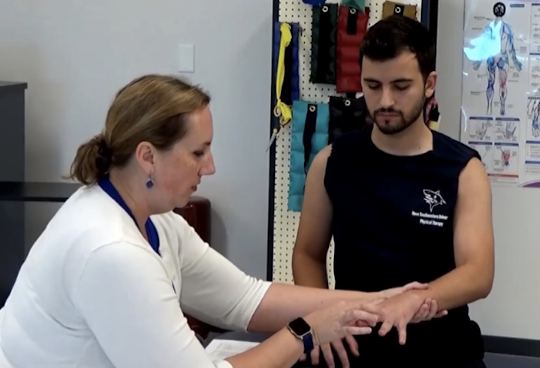
Motion to test L2 myotome
Hip Flexion
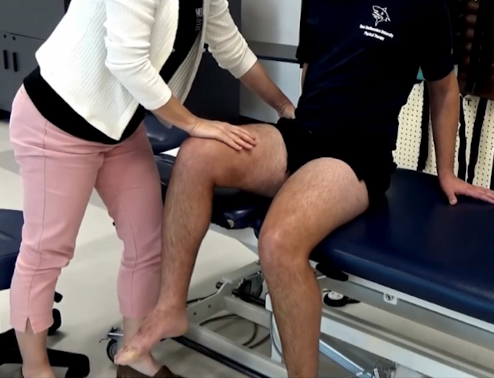
Motion to test L3 myotome
Knee extension
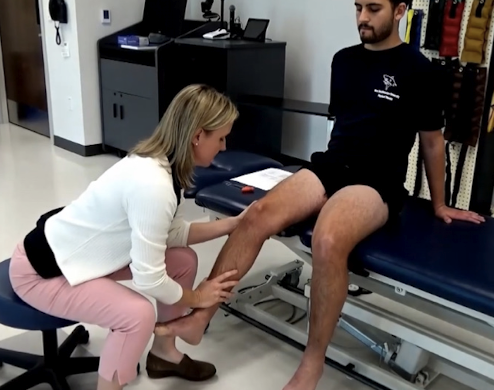
Motion to test L4 myotome
Ankle dorsiflexion
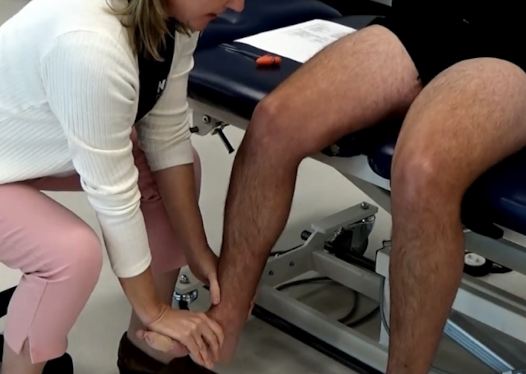
Motion to test L5 myotome
Great toe extension
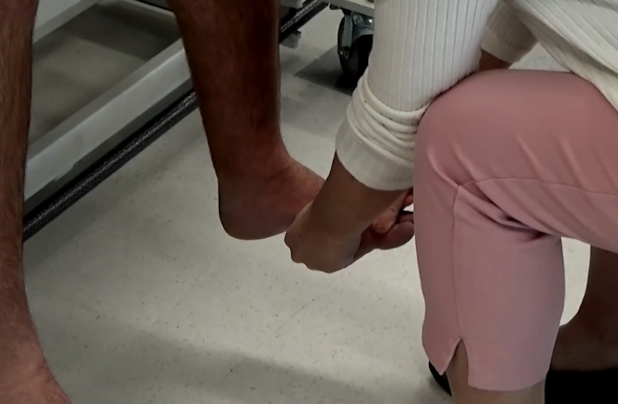
Motion to test S1 myotome
Ankle eversion
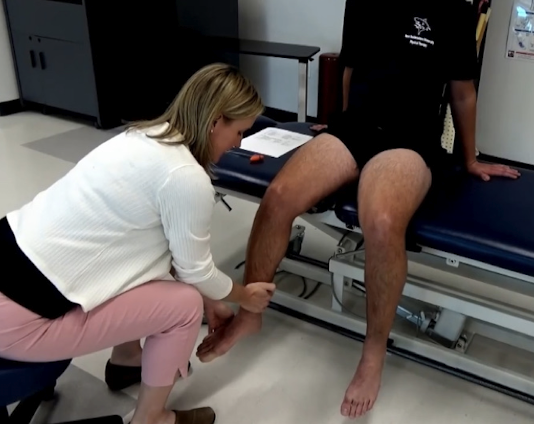
Motion to test S2 myotome
Ankle plantarflexion
